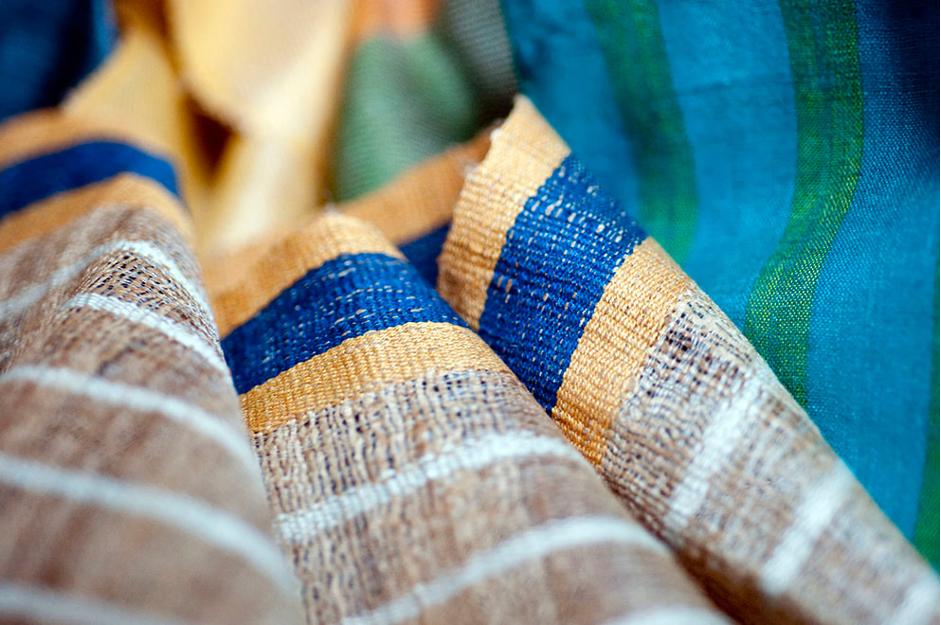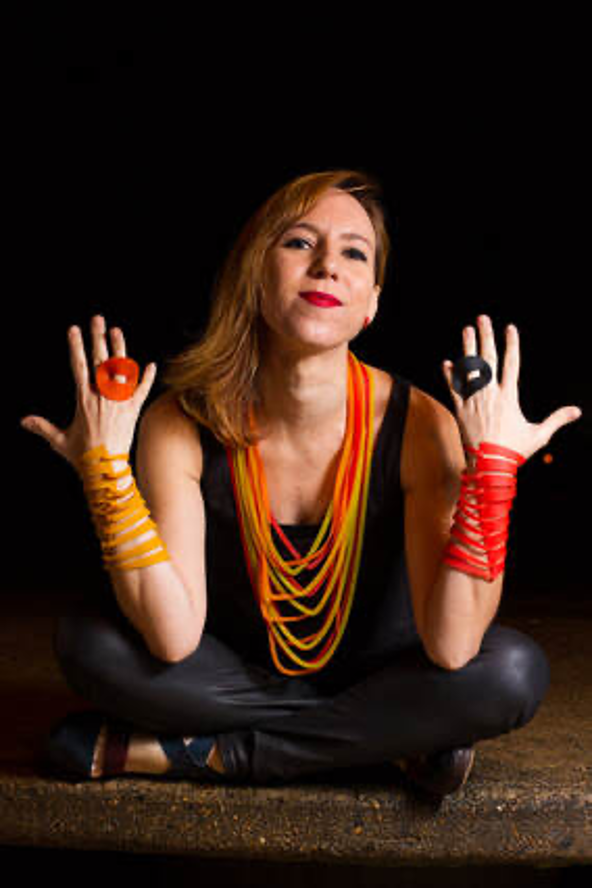Sustainable practises
Sustainability
Such a big word and such a big subject. And I don't think I can tackle it, in just the one blog.
But, for now, I wanted to share another experience in London, the trade show I went to called 'Future fabrics Expo' from the organisation 'The sustainable angle'.
I came across these guys on instagram, when I started following a feed called @make_fashion_circular , an initiative by @ellenmacartherfoundation.
To give you an insight into what a #circulareconomy means, I like this quote:
"The logical way to shape our economic system is by replicating what has always worked in Nature. everything gets reintegrated into the system and waste doesn't exist. That is the basis of our future circular economy" Agustin Cadiz.
Cadiz runs a company in Chile, called Rentivo, which is a growing niche to lease products instead of selling them. His focus is on baby gear.
When I started Smitten, I had recently left a full time job working for one of the large (Australasion) textile houses based in Auckland. I was a little bit horrified at the accumulation of end of life textiles that took up such a large amount of warehouse space and eventually, once the warehouse sales and emporiums had taken the best of the worst, it all ended up in landfill. (and this was more than a few rolls, more like a container ship load). And this is the same across 1000's of textile houses.
So, before I share some of the interesting start-ups and textile business out there, thinking differently with the planet in mind. Here is a bit of a summary of my research over the years, which is at the heart of why I do what I do.
I was also quite affected by the documentary 'The true cost' , if you haven't see this, then you should.
Textiles are the 2nd biggest pollutant in the world, with one garbage truck of textiles being landfilled or incinerated every second.
Here's a breakdown of some of the issues in textile production:
Water:
Typically, to produce 1 kg of fabric, 200 litres of water is consumed. This is because a lot of water is used throughout the fabric production process including; washing the fibre, bleaching, dyeing and then cleaning the finished product.
All this is separate from the fact that plants like cotton, consume at least 19,000 litres of water to produce just one t-shirt. (!)
Air pollution
Gaseous emissions in the textile industry have been sighted as the second largest pollution problem in the industry after water pollution, especially since most processes in textile production produce atmospheric emissions.
Solid waste and water pollution
The textile industry also produces lots of solid waste which ends up in landfills and water bodies, which can cause environmental issues. Globally, each year, about 90 million items of clothing end up in landfills.
This is only scratching the surface. You can read more here if you're keen, here are some links:
http://reve-en-vert.com/fashion-industry-one-biggest-water-polluters-world/
http://www.lenzing.com/en/investors/equity-story/global-fibre-market.html
https://en.wikipedia.org/wiki/Environmental_impact_of_the_coal_industry
OK, so there is much good happening as a reaction to this, and I have picked out a few things to to talk about inspired by the Future Fabrics Expo.
Also - I have written a bit about why I love linen here
THE FUTURE FABRICS EXPO 8, 24th - 25th January 2019
The future fabrics Expo is in its 9th year this year, and I was lucky enough to catch it last year. It was held in Victoria House, Bloomsbury Square, London. And as you would expect was a very a very busy and bustling event.
The focus of this expo is to showcase and communicate the positive benefits of a diverse range of responsibly and sustainably produced low impact textiles and materials.
I was on the hunt for some new base cloths to print on, that would tick the boxes of sustainability at a good price point. There was a lot to take in, and I left in a bit of an overwhelm, clutching business cards and a few hundred phone shots, in the hope to follow this up with manufacturers when back in N.Z. (still on top of the to do list!)
It wasn't like a normal trade show though, with manufacturers pushing product and buyers competing for space. It was more of a platform to educate and inform visitors from a diverse range backgrounds, promoting and connecting materials and suppliers with visionary designers and brands
"Sustainability is not a 'trend' or an option, it is now a critical imperative"
The sustainable angle
Alongside the racks and racks of beautiful textile samples, the expo had several display tables, with back-lit perspex tops, upon which were intriguing specimens and petri dishes on display.
This area showcased research into smart textile practises. The companies that are committed to making a lower environmental impact and are seeking alternatives to the fashion industries reliance on cotton and polyester.
These included Biotec textiles, textiles made from food waste, and businesses and start-ups that are invested in natural processes and a circular economy.
I have pulled out some of my favourite examples to share here and links to their website.
Coccon Crafts loom
This is a business that gives back to the local hard working farmers in east India, re-investing and empowering that community rather than just taking from it, as is so often the case in the textile industry. Their focus is on silk production that doesn't kill the pupae, no pesticides and no chemicals are used in the process.
Tencel Refibra
This is a great example of a company contributing to the Circular economy, using pre-consumer textile waste (the offcuts). combined with Wood pulp to create fabric that is biodegradable. they are working towards expanding this circular economy to include using post consumer textile waste in the production on their fabric. TENCEL™
Amadeu rubber
AMADEU supports small producers and artisans from Amazon rainforest, whose economic activities are integrated with the use of sustainable natural resources.
The coloured rubber represents a process of social innovation, which resulted from years of research, and has been responsible for generating social transformation and environmental preservation.
The focus of her work relies on supporting local communities, specially women, through collaboration on handcrafts and on the production of sustainable materials.
And check out the organic jewellery and accessories here:
Companies using By Products
Green whisper - create sustainable products with zero impact on the environment. They utilize the residue of agriculture and create products of daily use.
Malai – a newly developed biocomposite material made from entirely organic and sustainable bacterial cellulose, grown on agricultural waste sourced from the coconut industry in Southern India.
Malai is a flexible, durable biocomposite material with a feel comparable to leather or paper. It is water resistant and because it contains absolutely no artificial ‘nasties’ it will not cause any allergies, intolerances or illness. It is a completely vegan product
Companies using Natural Dyes
Living Colour - is a biodesign research project exploring the possibilities of natural textile dyeing with bacteria that produce pigment.
Botanical Inks provides contemporary traditional artisan natural dyeing services from our Bristol based studio.
Companies using Bioculture
Mycelium, the spores of mushrooms, are used it to make anything from chairs to lamp shades to packaging material. Dutch textile designer Aniela Hoitink decided to create a flexible version of the material: MycoTEX.
Companies using Circular systems
What do you need to have a GOTS certification?
GOTS. (Global organic textile standard) - Covers organic fibres throughout the supply chain. this means, from on farm production, to all the processing steps, to labelling to the final textile product. This includes setting social conditions, worker safety and sets chemical residue limits. This logo can only be used if the entire textile value chain is covered by the certification system.
In other words, a pretty high bar to reach, one to certainly look out for.
To find out more about Environmental Criteria Symbols, you can Click here
And finally - I thought I'd finish on this rather beautiful piece of Textile Art, that was on display at the Te Tuhi Art gallery, in Pakuranga
On Te Tuhi’s Project Wall, Karen Rubado has created this new work called under intense scrutiny.
It is made in reflection of the broken system of soft plastic recycling in New Zealand.
Single-use packaging solutions, are part of our daily lives, originally introduced as a way of increasing consumption. Now, with so many industries slow to change their reliance on plastic packaging, the responsibility to reverse this culture of hyper-disposability has fallen to the consumer and the government.
To create under intense scrutiny, Rubado collected soft plastics used over a month by six families. The material was then hand-shredded and assembled through hand-weaving techniques to form a long plastic textile.
In re-presenting these ‘disposable’ plastics, Rubadoinvites scrutiny of manufacturers and their processes and highlights the importance of consumers connecting with and understanding the materials they purchase.
On that note - Imagine if we lived in a world where our desire for instant gratification, vacum packed perfection and retail therapy, no longer existed?






